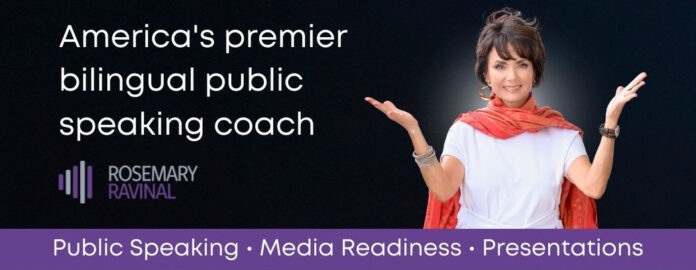By Rosemary Ravinal
In the realm of public speaking, real influence begins when you truly see your audience. The indigenous greeting I see you, associated with Zulu and Mayan cultures, among others, holds wisdom for modern speakers. The practice of acknowledging and honoring your audience can turn a good speech into a STAR (Something They Will Always Remember) moment.
The spoken phrase I see you is deeply meaningful, often implying recognition of the other person’s dignity, and humanity. “Sawubona” is a beautiful and culturally rich greeting in Zulu, one of the 11 official languages of South Africa. The tradition comes from Ubuntu, an African philosophy that emphasizes communal relationships and shared values. It’s often responded to with “Ngikhona,” meaning “I am here” — which implies: Only when you see me do I exist. Together, they create a moment of mutual recognition and connection. It’s about being fully present with others emotionally, spiritually, and socially.
In the Mayan tradition, “In Lak’ech” (“I am you”) paired with the response “Hala Ken” (“You are me”) implies that we are reflections of each other. It aligns with the Mayan worldview of interconnectedness, reciprocity, and compassion. The Mayan civilization, which spanned southern Mexico, Guatemala, Belize, western Honduras, and El Salvador, was one of the most advanced in the Americas.
Both the Zulu and Mayan greetings echo ideas found in other ancient philosophies, such as the Māori of New Zealand and Native Peoples like the Lakota. As well, the phrase, “Namaste,” typically said after a yoga class, comes from Sanskrit commonly used across South Asia. It means “I bow to you,” or put another way, I see and honor the light in you, which is also in me.
These simple phrases represent a profound acknowledgement of the interconnection of speaker and listener: I recognize your presence. I honor your existence. I value your attention. When applied to public speaking, this mindset can transform a presentation into a genuine, trust-filled, and impactful experience. One of the most powerful messages you can send to an audience is I see you.
Connection begins with recognition
When you mentally hold the idea of I see you, you speak to the audience, not at them. This shift in energy is subtle but palpable. The audience can feel when you’re genuinely present and notice them as individuals rather than a faceless crowd.
Think about the difference between a speaker who scans over heads with a memorized monologue, and one who pauses, makes eye contact, and speaks with sincere interest. The latter says with every gesture: You matter. I’m here with you, not just in front of you. That’s where trust begins. Trust is born not just from polished delivery, but from presence.




